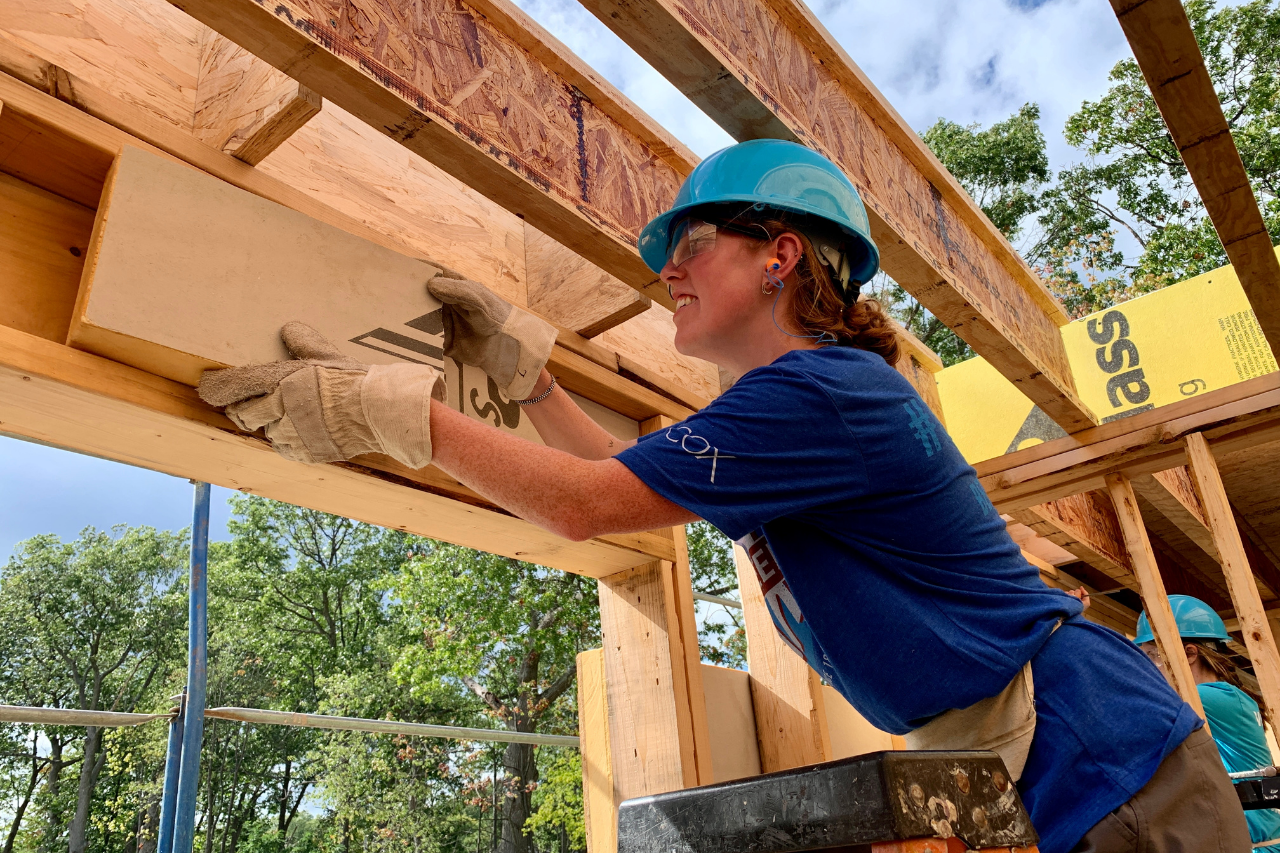While our efforts are focused on bettering the lives of families in Northwest Vermont, we cannot neglect the impact that our efforts have on the resilience of the state of Vermont.
Many impacts of affordable housing are not easily quantified by numbers, such as social capital, community resilience, or feelings of safety.
However, the economic effects of our efforts are. In 2019, Habitat for Humanity International conducted an Economic Impact Assessment for every state across the US to understand the effect of Habitat Affiliates’ activities on local economies.
Their research department conducted an economic impact assessment using IMPLAN, an economic modeling software, to analyze the data from Vermont Habitat Affiliates. The assessment used financial information from affiliates’ financial statements, such as 990 forms.
According to the Library of Congress, form 990 aims to increase financial transparency, and it includes revenue, expenditure, and income data in addition to information used to assess whether a nonprofit aligns with federal requirements for tax-exempt status.
The model used other state economic data to project our footprint on the Vermont economy.
As the largest Affiliate in the state, our actions can have a significant impact for overall Habitat for Humanity activity in Vermont. We build between 5 and 6 homes in a year, while other Habitat Affiliates in Vermont build only one house every year or every other year.
“We have seen the impact that Green Mountain Habitat has had on local communities. These homes change the lives of the families and the neighborhoods around them,” said David Mullin, CEO of Green Mountain Habitat for Humanity.
When Habitat Affiliates spend money on business expenses, hire contractors, and pay our employees, businesses and individuals then have more to spend on employees and the local economy. When companies are able to hire more employees and increase their business activities, then the economy is able to grow.
Nonetheless, our collective efforts towards affordable housing are making a difference for partner families and for the state as a whole. In 2019, $3.95 million was spent on operations, construction, rehabilitation programs, and renovation programs. This amounted to an economic impact of $6.96 million.
For every dollar invested in the state’s economy by Habitat Affiliates, there was a $1.76 return from that investment for Vermont’s economy.
When we build homes, those homeowners are also contributing to state and local taxes. Habitat homeowners paid an estimated $34,450 in property taxes and $298,663 in other state and local taxes.
Additionally, we are generating impact for Vermont’s economy through our staff. At Green Mountain Habitat, we employ over 50 employees across our administrative office, three ReStore locations, and construction staff.
Including all Vermont Affiliates, there are over 85 Habitat employees, and over $2.94 million was paid in wages in 2019, which has a direct impact on the local economy.
According to our 2022 Impact Report, 92% of our budget goes towards our program activities, which includes operating our ReStores, building homes, and organizing volunteers. Only 8% goes towards administrative operations of the organization.
Our work impacts the health, education, environmental, social engagement, and financial outcomes of our partner families. But our impact goes beyond that.
“Not only are we giving families the opportunity to succeed, but we are also making an impact on the community at large,” said Mullin.
To learn more about the economic impact of Vermont Habitat Affiliates, check out the Economic Impact Analysis from HFHI.


Comments are closed.